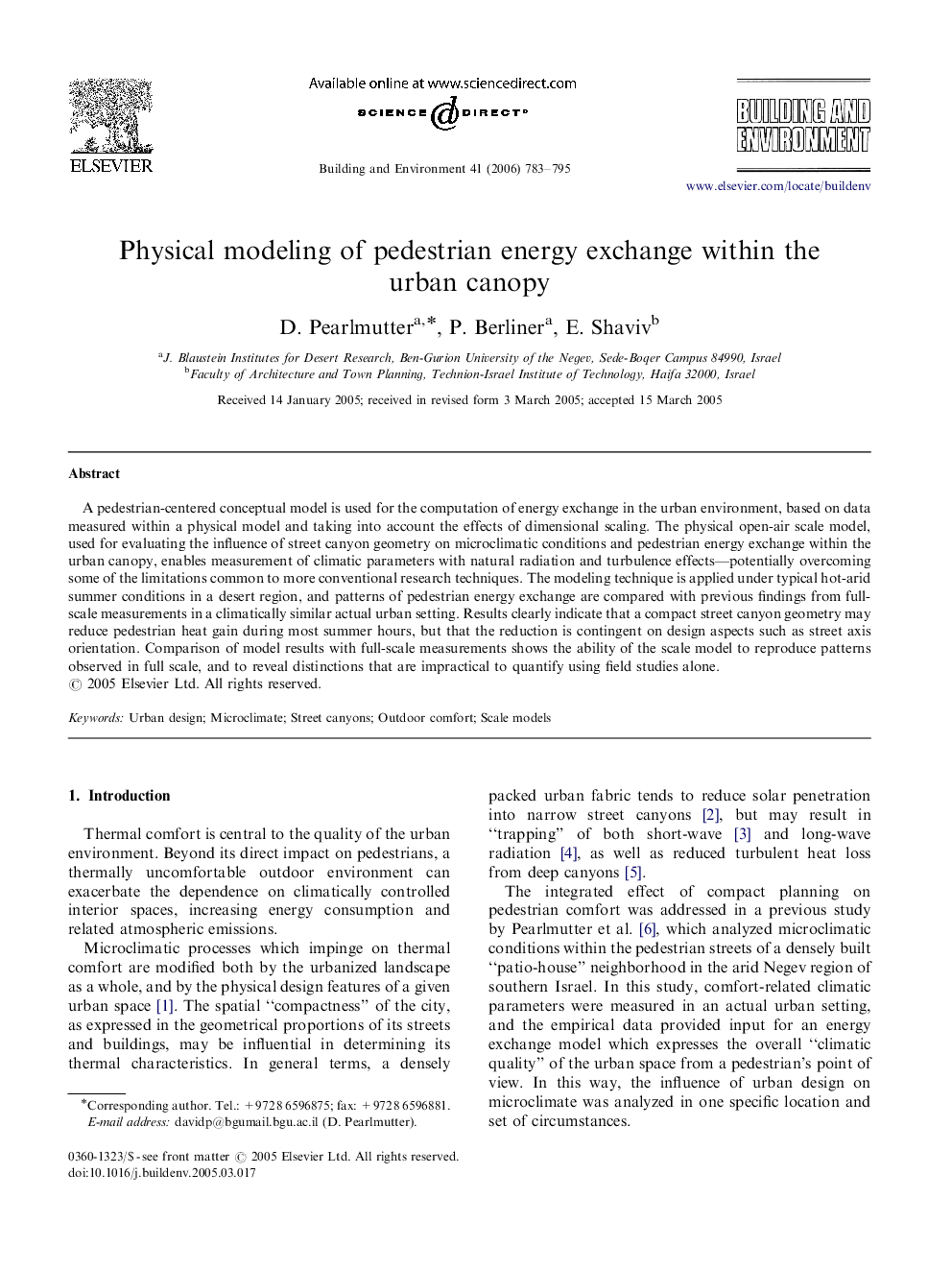| Article ID | Journal | Published Year | Pages | File Type |
|---|---|---|---|---|
| 250398 | Building and Environment | 2006 | 13 Pages |
A pedestrian-centered conceptual model is used for the computation of energy exchange in the urban environment, based on data measured within a physical model and taking into account the effects of dimensional scaling. The physical open-air scale model, used for evaluating the influence of street canyon geometry on microclimatic conditions and pedestrian energy exchange within the urban canopy, enables measurement of climatic parameters with natural radiation and turbulence effects—potentially overcoming some of the limitations common to more conventional research techniques. The modeling technique is applied under typical hot-arid summer conditions in a desert region, and patterns of pedestrian energy exchange are compared with previous findings from full-scale measurements in a climatically similar actual urban setting. Results clearly indicate that a compact street canyon geometry may reduce pedestrian heat gain during most summer hours, but that the reduction is contingent on design aspects such as street axis orientation. Comparison of model results with full-scale measurements shows the ability of the scale model to reproduce patterns observed in full scale, and to reveal distinctions that are impractical to quantify using field studies alone.
